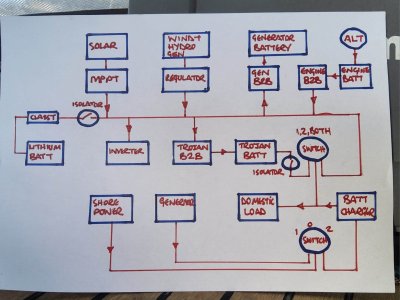pcatterall
Well-known member
Just reading ( with interest) the thread from Neeves.
I have dipped into the comprehensive information from Poey50 and others and understand bits!!
I appreciate the idea that the DIY route has many rewards amongst them being the value of understanding this essential part of of our yachts.
What would be of immense value now would be a summary/guide which abstracts the essence of the great work done by our experts to act as a guide
for those of us who need a few prods and pokes in the right direction.
Poey50's tip/recommendation on sourcing batteries is a good example of the sort of experience that the rest of us would find very useful!
Thanks (in anticipation!?)
I have dipped into the comprehensive information from Poey50 and others and understand bits!!
I appreciate the idea that the DIY route has many rewards amongst them being the value of understanding this essential part of of our yachts.
What would be of immense value now would be a summary/guide which abstracts the essence of the great work done by our experts to act as a guide
for those of us who need a few prods and pokes in the right direction.
Poey50's tip/recommendation on sourcing batteries is a good example of the sort of experience that the rest of us would find very useful!
Thanks (in anticipation!?)

